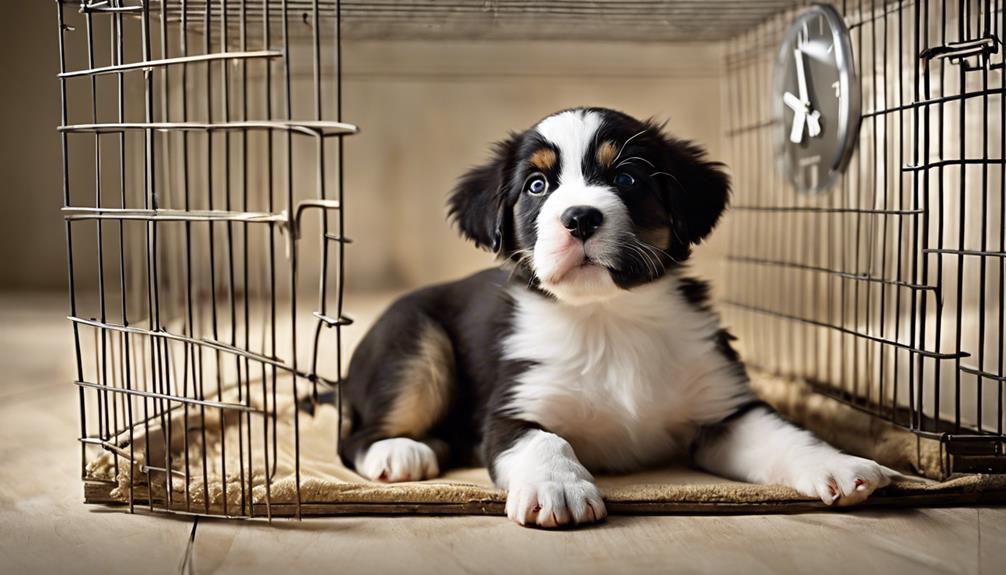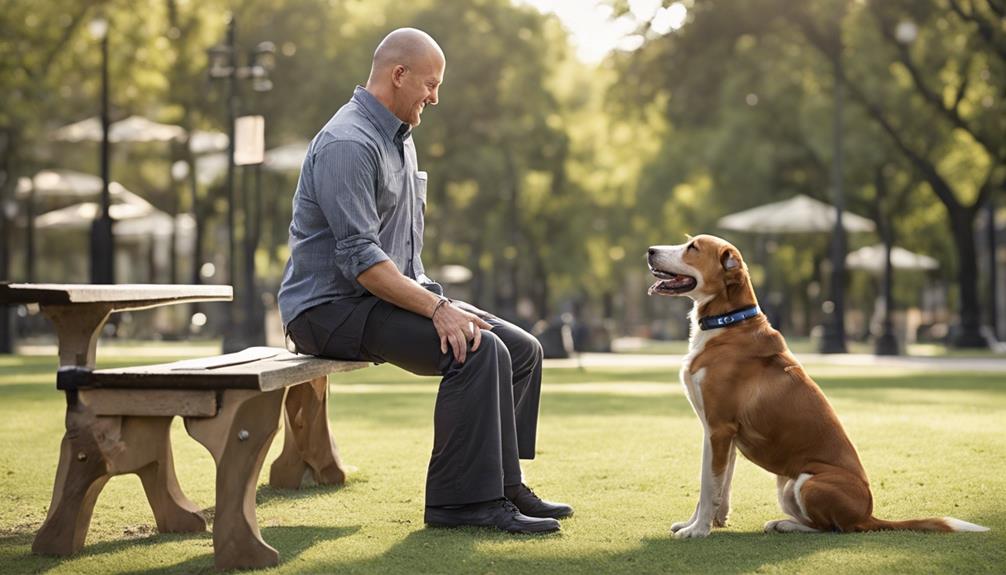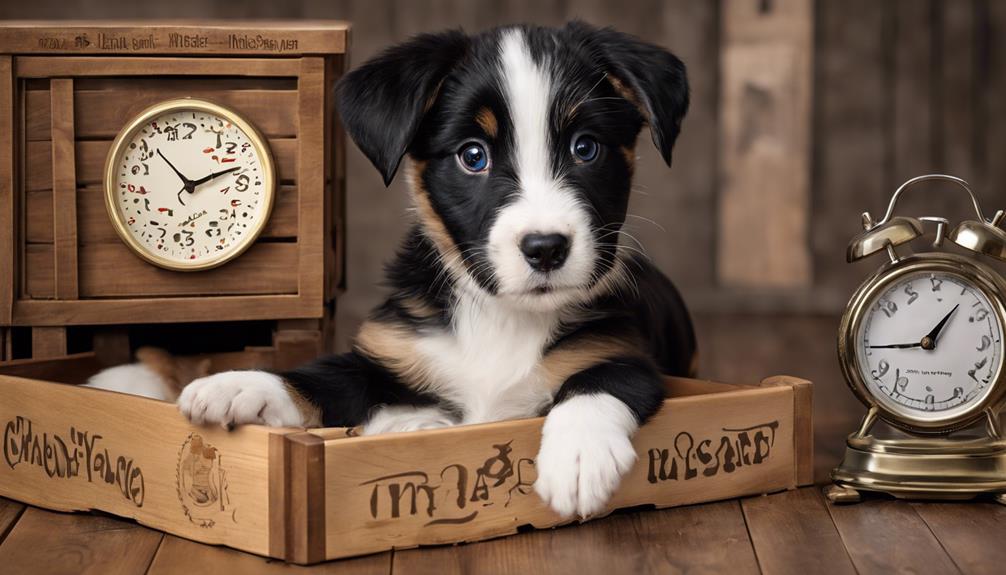Crate training our 16-week-old puppy involves following a 5-step schedule. We begin by ensuring a positive experience with treats and toys near the crate, rewarding our puppy for entering willingly, and feeding meals inside. Next, we create a quiet and cozy crate area, build positive associations with playtime and high-value treats, and slowly increase crate time while monitoring our puppy’s comfort.
Monitoring comfort levels and adjusting setups guarantee a smooth training journey. If interested, more insights on crate training await.
Key Takeaways
- Start with short crate sessions, gradually increasing time.
- Use positive reinforcement like treats and toys.
- Monitor puppy's comfort and adjust crate setup as needed.
- Incorporate playtime and mental stimulation before crating.
- Ensure a comfortable environment with cozy bedding and familiar scents.
Introduction to Crate Training
When introducing crate training to your 16-week-old puppy, it's important to create a gradual and positive experience for them. Begin by placing treats and toys near the crate to entice your puppy to explore the area.
Encourage them to enter the crate willingly by rewarding them with treats when they do so. Start feeding your puppy their meals inside the crate to establish a positive association with it.
Monitoring your puppy's comfort level is vital during this process. If your puppy seems anxious or stressed, adjust the training routines accordingly to make sure they feel safe and secure in their new space.
Setting Up the Crate Area
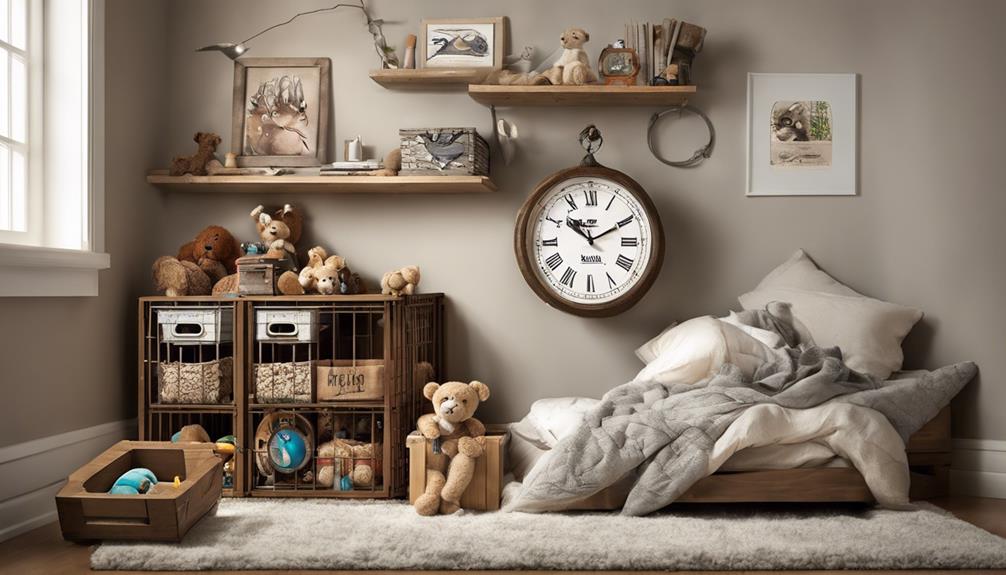
To guarantee a cozy and welcoming space for your 16-week-old puppy, the arrangement of the crate area plays a crucial role in their crate training journey. When setting up the crate area, choose a quiet spot in your home to minimize distractions.
Make sure the crate is positioned away from drafts and direct sunlight to provide a comfortable environment for your puppy. Placing a mat or rug under the crate can prevent it from sliding on smooth floors, offering stability for your pet.
Inside the crate, add comfortable bedding or a blanket to promote relaxation during crate time. It's important to keep the crate area well-ventilated to maintain a pleasant atmosphere for your puppy.
Establishing Positive Associations
Establishing positive associations with the crate involves using high-value treats or toys to create a welcoming and enjoyable environment for your 16-week-old puppy. By associating the crate with positive experiences such as playtime and mealtime, you can help your puppy view the crate as a safe and comforting space. Incorporating cozy bedding and familiar scents inside the crate can further enhance your puppy's comfort level. It is important to avoid forcing your puppy into the crate; instead, encourage them to explore willingly to build positive associations.
| Crate Training Tips | Description |
|---|---|
| Use High-Value Treats | Reward your puppy with special treats when they enter the crate voluntarily. |
| Engage in Playtime | Have play sessions near the crate to make it a fun and inviting area for your puppy. |
| Mealtime Association | Feed your puppy inside the crate to create a positive association with mealtime and the crate. |
| Cozy Bedding and Scents | Provide comfortable bedding and familiar scents to make the crate a cozy and secure space. |
Gradual Crate Time Increase
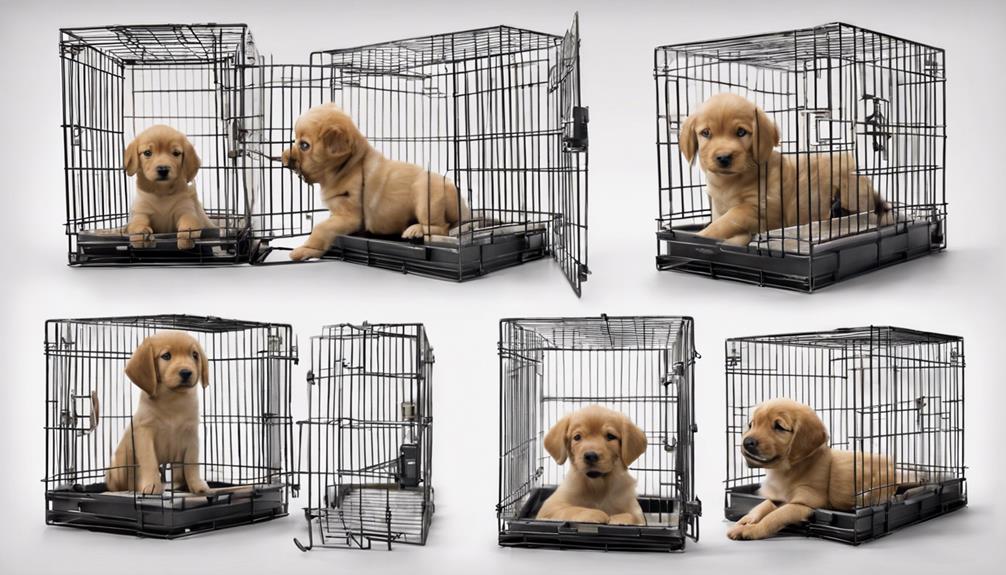
To gradually increase your 16-week-old puppy's crate time, add 15-30 minutes each day while monitoring their comfort levels closely for a smooth adjustment process. This gradual approach helps your puppy acclimate to longer durations in the crate without feeling overwhelmed. It's important to observe your puppy's reactions during this time to make sure they're comfortable and not exhibiting signs of distress.
During this period of crate time increase, continue to use positive reinforcement techniques such as treats to encourage your puppy to view the crate as a positive and safe space. Providing mental and physical stimulation before crating can also help your puppy settle in more easily. Engaging your puppy in play or short walks can help release excess energy, making them more likely to relax in the crate.
Monitoring Comfort and Adjusting
As we continue to gradually increase your 16-week-old puppy's crate time, it is important to monitor their comfort levels closely by observing their body language and behavior. Your puppy's well-being is essential during the crate training process. Adjusting the crate setup to cater to your puppy's preferences and needs will help create a snug environment that promotes relaxation and positive associations with the crate. Make sure the temperature inside the crate is comfortable, neither too hot nor too cold, to keep your puppy content.
To provide a comfortable and engaging space for your puppy, offer a variety of toys and blankets. These items can help keep your puppy occupied and comfortable while inside the crate. Regularly checking the crate for any signs of wear or damage is vital to ensure your puppy's safety at all times. By paying close attention to your puppy's comfort levels, body language, and behavior, you can make necessary adjustments to the crate setup to create a secure and inviting environment for successful crate training.
| Crate Setup | Cozy Environment | Safety |
|---|---|---|
| Comfortable bedding | Toys for play | Regular checks |
Frequently Asked Questions
How Do You Crate Train a 16 Week Old Puppy?
To crate train a 16-week-old puppy, we introduce the crate positively with treats and toys. Start with open-door exploration, encourage entry during meals, and gradually increase crate time. Monitor comfort and adjust for successful training.
Is It Too Late to Crate Train a Puppy at 16 Weeks?
No, it's not too late to crate train a 16-week-old puppy. At this age, they're still receptive to learning. Importance and positive reinforcement are essential. Start now to prevent future behavior issues and provide a safe space for your puppy.
What Is a Good Crate Training Schedule?
We establish a gradual crate training routine for a 16-week-old puppy by starting with short sessions and extending as comfort grows. Multiple short crating periods daily, balanced with potty breaks and playtime, foster positive associations and support development.
How Do You Crate Train a 4 Month Old Puppy at Night?
We gradually increase crate time, take puppy out pre-bedtime, limit water, and provide cozy bedding for security. This routine helps develop bladder control and reduces nighttime accidents. Training a 4-month-old puppy at night requires consistency and patience.
– Can the same crate training schedule be used for puppies of different ages?
When it comes to crate training your puppy at 9 weeks, it’s important to consider the individual needs of each pup. Older puppies may be able to hold their bladder for longer periods, allowing for a more lenient schedule. Younger puppies, on the other hand, may require more frequent potty breaks.
Conclusion
As we wrap up our crate training schedule for your 16-week-old puppy, we hope you have found success in creating a safe and comfortable environment for your furry friend.
Remember, consistency is key in this process. By following these steps, you're laying the foundation for a well-behaved and happy pup.
Keep up the great work, and soon enough, your puppy will see their crate as a cozy retreat, just like a warm blanket on a cool night.
